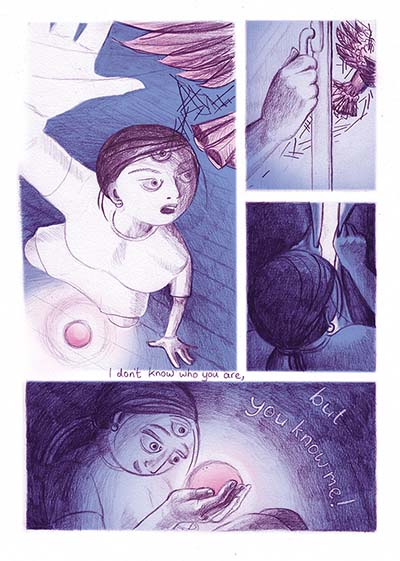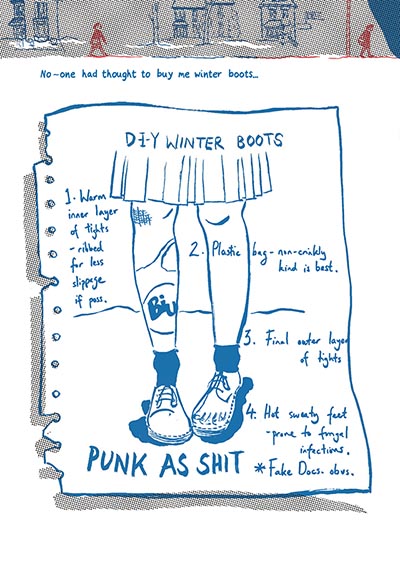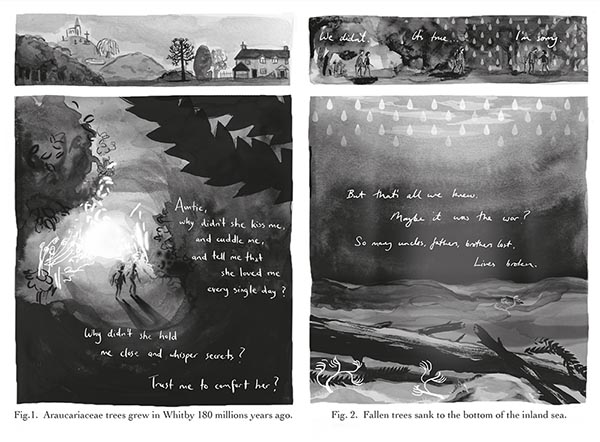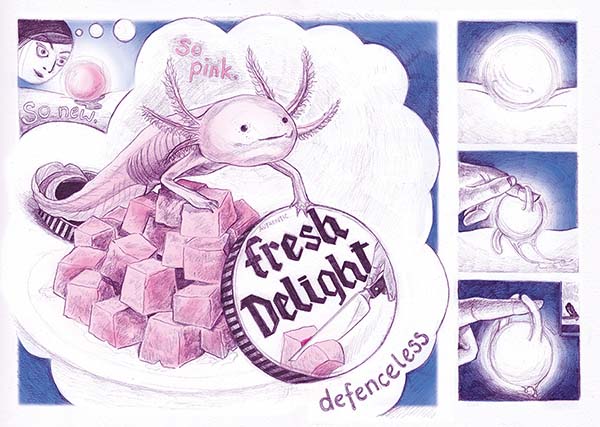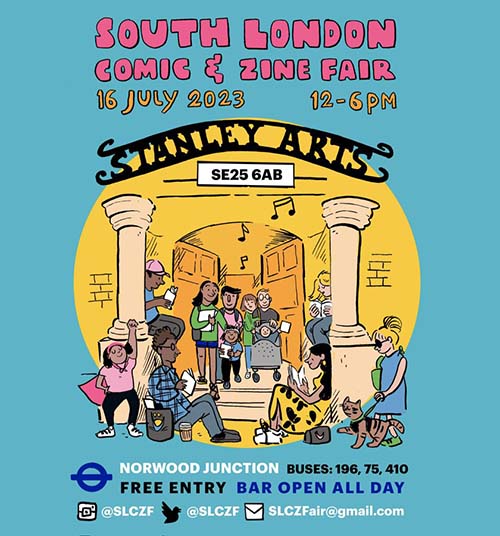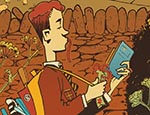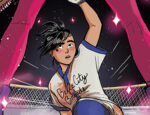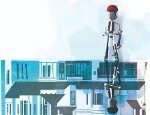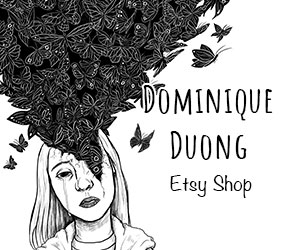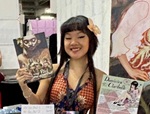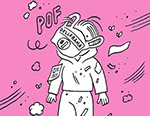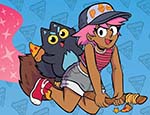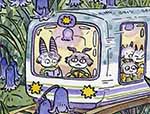SLCZF 2023! Our Inside Look feature at Broken Frontier provides creators with the opportunity to share exclusive commentaries on their comics projects with our readers, giving insights into the genesis, process and themes of their work. It’s one of the oldest regular features at BF, first appearing on the site back in the mid-2000s and also one of our most well-received. Today, as part of our SLCZF 2023 celebrations, artist Julie Innes talks with great insight about the autobiographical strand of comics storytelling. Make sure to visit Julie’s table at the South London Comic and Zine Fair on July 16th!
Image 1. Zoe
I started making autobiographical comics for the same reason that many people do: to try and make sense of things. I had ideas, but it felt like a self-indulgent thing to do, and I wondered who on earth would want to read about me? I realised that many of the comics I enjoyed were people sharing their own experiences. I read Paving Paradise by Jayde Perkin, and I was so moved by her story about her grief for her mother – it was short, it didn’t offer solutions, or reveal any stunning truths – but it felt like a generous expression of what it is to be human, and what else is there? The most fun (and nauseating) part of autobiography is getting to draw different versions of yourself – right now I am a three eyed contemporary goddess who drives a train – yeh, I am!
Image 2. Winter Boots
As a newcomer to comics, short-form seemed to be a perfect format to start with and I made notes about some of the pivotal events of my youth. I knew a few things: I wanted to write three stories that were different but formed a whole, and I also wanted to write about difficult times but with optimism. This image from Jump embodies that creative urge, and as a teenager this was a conscious coping mechanism for me: take a difficult moment, make something beautiful out of it, and somehow it’s OK (There are many pages of “beautiful” poetry somewhere in my mum’s basement that hopefully will never be seen again!)
Image 3. Jet Brooch
One thing that I love about comics is that they allow multiple readings, you can tell two different stories at the same time. My short comic Your Brother talks about the tragic death of my teenage brother in parallel with a story of a day that I spent with him 10 years earlier. Really, I wrote this to remind myself of how close we once were, but with a wider aim of humanising a story of addiction – so the title was really important: this could be your brother.
I have also used this dual narrative in Touch – the Intimate History of Jet. An intense conversation with my Aunt about the emotional restraint in my family, is paired with the story of how the precious rock jet forms, and the two stories come together at the end as my aunt gifts me a jet heirloom. This conversation causes me to reconsider what my mother inherited, what she passed on to me, and the complexity of how we express and feel loved. The jet brooch is a link to my ancestors, and a reminder that historical context plays a part in how we interpret our past.
Image 4. Sweet Delight
My current project is about my own role as a mother. My oldest son is now a teenager and watching him learn to be a human in the world has been a challenge! I am not comfortable with writing about his life directly, so I decided that a more surreal and fictional approach would be best. This image represents the wonder and terror I felt when I first held my new baby. This form that was both part of me and alien at the same time – incredibly vulnerable and all my responsibility! I remember his little pink fingers, so delicate that they were almost transparent – I was so scared that something would happen to them. It was my job to protect him, at the cost of anything else.
This image brings together the endangered axolotl, and delicious Turkish delight. The image of the knife slicing the Turkish delight (and potentially cutting the animal), was initially an important part of the image, but I found the strong diagonal of the knife ruined the composition. Maybe it was too gruesome as well? Containing the knife image to the lid of the box was a more subtle approach, and I hope still implies vulnerability. I really like the play between images and words that leaves the reading open to the viewer. For me this is a quite poetic approach to expressing my ideas, but then I often panic that I won’t be understood – so I add more text that I then usually delete the next time I read it.
I find that no matter how many drafts I make, a comic constantly evolves as you put it together. This image started as separate ideas in small panels, that then consolidated into one image, and then took over one page. Sometimes an image takes over, and then you remember your audience and hope they just understand what you are trying to do. I am trying to balance many things in this comic: I want it to be cute but a bit gross, realistic yet mythological, and optimistic with a hint of darkness. Who knows if I’m getting it right? Feedback from readers will be interesting – it’s one of the best things about showing your work at a fair – and the beauty of small press is that I can do what I like, and change it as I go!
Discover more about the work of Julie Innes on Instagram here
SLCZF is held at Stanley Arts on July 16th. More details here.





